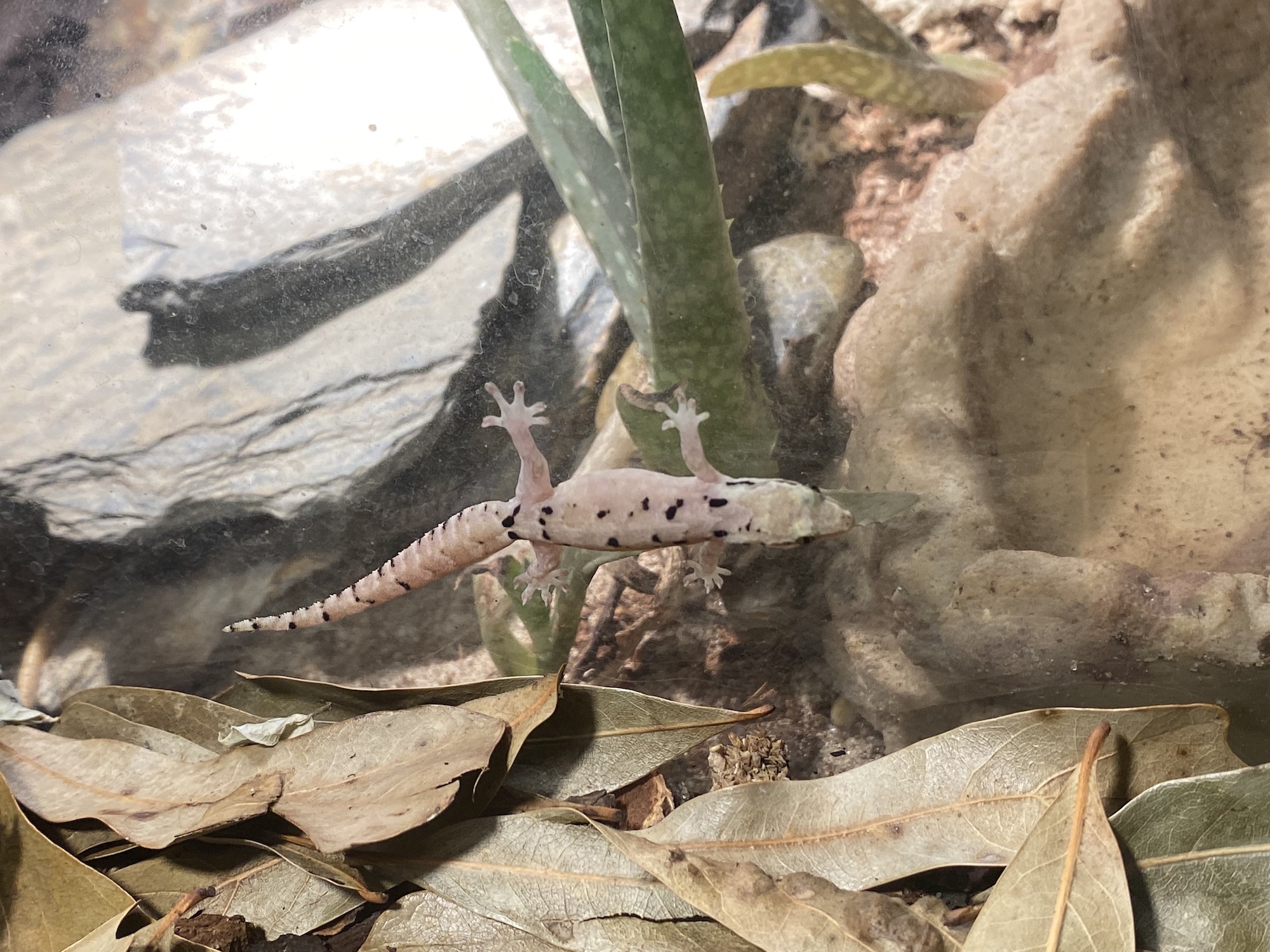CARE GUIDE
Lepidodactylus lugubris
Mourning geckos are a small gecko species with some unique characteristics. They are social and very easy to breed. They are also often kept with dart frogs without any issues, making them popular amongst different groups of reptile and amphibian keepers!
NATURAL RANGE
Mourning geckos are found in the tropical coastal areas of the Pacific and Indian Oceans. They been introduced into Nicaragua, Costa Rica, Panama, the Galapagos islands, Colombia, Chile, the Seychelles islands, Mexico, and Hawaii.
HOUSING
Mourning geckos will thrive in an enclosure as small as 5 gallons, but 10 gallons or larger is recommended for groups. Many people successfully keep these geckos
in bioactive vivariums housed with larger dart frogs. Mourning geckos are escape artists, and it’s always important to fully secure their enclosure to prevent escapes!
TEMPERATURE & HUMIDITY
They typically thrive at room temperature, but a low wattage basking light may be needed in cooler climates. Their ideal temperature range is 70F – 80F with access to UVB.
SIZE & LIFESPAN
Adult mourning geckos get up to about 4″ in length. When they hatch, Lepidodactylus lugubris measure less than an inch! They can live longer the 10 years, with reports of 15 years in some cases.
FEEDING
Juveniles will readily eat fruit flies & pinhead crickets. Adult mourning geckos will eat 1/4″ crickets, as well as other insects that size. At all life stages, mourning geckos will feast on gecko diet mix. This can be fed as a complete diet to mourning geckos, but we prefer to offer them a variety of feeder insects, as well for health, enrichment, and variety.
SOCIAL BEHAVIOR
Lepidodactylus lugubris is fine housed alone or in groups, as long as enough space and hiding places are provided. They can be very vocal when housed together, with the animals making various squeaks and creaks to communicate. Aggression can sometimes occur, but generally does not result in the injury of an animal.
Mourning geckos are not good for handling and are typically a ‘look but don’t touch’ pet.
SEXING & BREEDING
Mourning geckos are the easiest species of any animal to sex – they are all females! Lepidodactylus lugubris is a parthenogenetic species. This means that females lay fertilized eggs, and their offspring are little clones of the parent. They WILL produce on their own, however, they do benefit from stimulation from other females to reproduce faster.
Mourning geckos are very easy to breed. They are best kept in pairs or groups for breeding – 2 females will stimulate each other via pseudocopulation, resulting in 2 gravid geckos. Mourning geckos reach sexual maturity at 8-10 months of age, and will lay clutches of 2 eggs every 4-6 weeks. Eggs take about 2 months to hatch at room temperature and do not need outside incubation.



